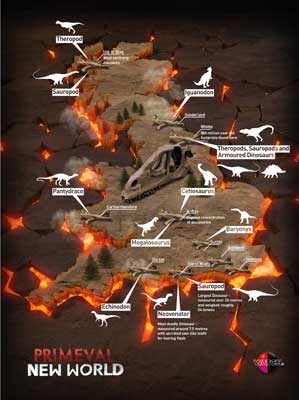Over 125 million years ago the Isle of Wight was infested by dinosaurs five times longer than buses.

According to The Natural History Museum in London – which has created a map of dinosaur finds identifying hotspots where the monster reptiles roamed – The Isle of Wight was swarming with terrifying predators and other huge beasts.
As well as having yielded the neck bone of a Sauropod, a mighty beast that would have been more than 20 meters in length, the island was also home to Europe’s deadliest predator, a giant saw-toothed Neovenator. Discovered by palaeontologists in 1978, this monster would have been eight meters in length – with a mouth full of razor-sharp teeth, and five-inch claws.
More than 100 species of dinosaur have been found across the whole of the British Isles – from 54-tonne Suropods, to tiny Echinodons which were no bigger than a cat. But the number of fossils found in the Isle of Wight beats even the famous Jurassic Coast in Dorset for fossil finds more than 125 million years old.
Visitors wanting to get up-close-and-personal with Dinosaurs on the island today have various options. Dinosaur Isle is Britain’s first purpose-built dinosaur museum and visitor attraction. The Isle of Wight also boasts its own ‘Fossil Man’ – Martin Simpson, a local palaeontologist, who offers fossil hunting trips that can be booked at the Isle of Wight Pearl Centre (tel: 01983 740493). And it’s also possible to walk in the footsteps of dinosaurs on some beaches on the island.
You’ll find full details at www.islandbreaks.co.uk/attractions/dinosaurs For all other tourist information, visit www.visitisleofwight.co.uk





 © 2024
© 2024